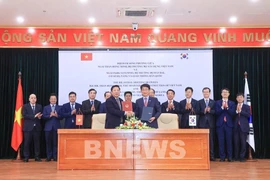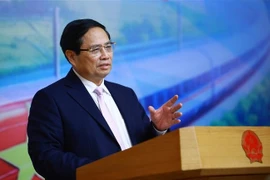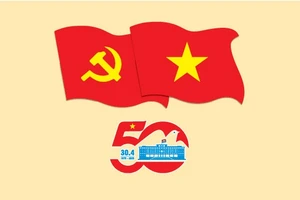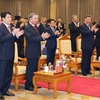Hanoi (VNA) – The Government on April 23 issued Resolution No. 106/NQ-CP that details the roadmap for implementing the North – South high-speed railway project, requesting all necessary conditions be completed to commence construction no later than December 31, 2026.
Spanning approximately 1,541 kilometres, the proposed rail line will have speeds of up to 350 kilometres per hour. Designed with a load capacity of 22.5 tonnes per axle, the project will comprise 23 passenger stations and five freight depots. Importantly, the infrastructure and equipment are intended to be dual-use, capable of supporting both civilian and national defence logistics, including cargo transport when required.
Recognising the scale and complexity of this project as unprecedented in Vietnam, the Government has directed relevant ministries, provincial authorities, and specialised agencies to urgently establish the necessary legal and procedural groundwork.
This includes the drafting of detailed regulations governing technical surveys, the adoption of Front-End Engineering Design (FEED) standards in place of conventional preliminary designs, and the overall cost management framework for projects using the FEED methodology. The regulations will also define the responsibilities and obligations of all stakeholders involved in Engineering, Procurement and Construction (EPC) contracts, including investors, contractors, and consultants.
Further legislative work will establish criteria for selecting eligible State-owned enterprises or Vietnamese firms to supply industrial goods and services essential to the railway sector. Additionally, the Government will issue guidelines to support scientific research, technological innovation, and the transfer of advanced rail technologies. Environmental and land-use considerations are also being addressed.
Complementary to these efforts, the Prime Minister will issue a formal decision outlining the specific types of industrial goods and services to be prioritised for procurement through Vietnamese enterprises.
In parallel, relevant parties are tasked with building a national plan for railway industry development through 2035, with a vision toward 2045 to submit to the PM for approval. This plan should assess the current state of the sector, establish clear objectives, and lay out detailed implementation measures across critical domains, including civil construction, equipment manufacturing, specialised materials production, electrical systems, signalling infrastructure, and the supporting industry.
Recognising that human capital is essential to the success of such an ambitious project, building a comprehensive workforce training and development plan is also among the tasks. Training needs across the project’s lifecycle, from design and construction to management, operation, and long-term maintenance will be identified. It will address demand of both public and private sectors, including government bodies, project management units, contractors, and operating entities, among others.
In addition, the specialised project management board will be reorganised to better oversee the railway’s execution.
Under the resolution, the Ministry of Construction has been designated the lead agency responsible for coordinating the implementation of the project.
The resolution sets a strict timeline, asking for consulting firms for making surveys and a detailed feasibility study to be selected so as to submit the study to the PM by August 2026. Later, the State Appraisal Council will assess the study and submit it to the PM for approval by September 2026.
Key infrastructure-related tasks such as site clearance, compensation, resettlement, and the relocation of affected power lines are expected to be largely completed by December 2026. These efforts will be made by localities and Vietnam Electricity (EVN), ensuring that contractors can be given cleared sites on schedule.
Contractor selection, contract finalisation, and other necessary steps must be completed on time to enable the official ground-breaking before December 31, 2026.
Meanwhile, construction, equipment procurement, and installation must also be carried out on schedule so that the project is put into operation in 2035 as targeted by the National Assembly./.
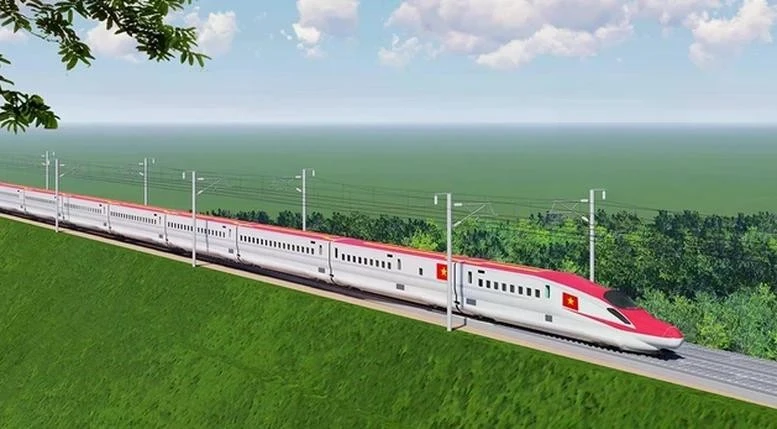
See more

HCM City moves closer to establishing int’l financial centre
The establishment of an international financial centre is expected to serve as a catalyst to accelerate the city’s transformation and position it for breakthrough growth in the coming years.
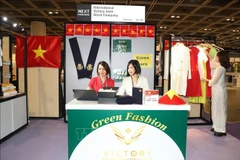
Vietnam brings breath of sustainability to Hong Kong international fashion fair
Running from April 27 to 30, the Fashion InStyle sees the participation of sustainable and eco-conscious suppliers from 19 countries and territories.

PM urges proactive engagement with US on trade talks
Trade negotiations with the US must be calm, consistent, and flexible, aiming to protect national sovereignty, security, and interests, while upholding international commitments and pursuing “balanced interests, shared risks," said Prime Minister Pham Minh Chinh.
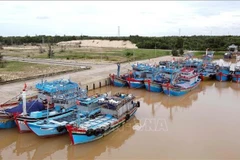
Vietnam races against time to have EC’s "yellow card" lifted before Sept. 15
The Ministry of Agriculture and Environment particularly focused on resolving all EC concerns before September 15, the deadline for submitting a progress report to the commission, as well as ensuring thorough preparations for the fifth inspection so as to secure the removal of the “yellow card” warning.
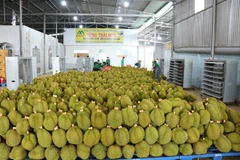
Vietnam keen on bolstering economic ties with China's Greater Bay Area
Vietnam places great importance on advancing cooperation with the Greater Bay Area, particularly in the sectors based on Fourth Industrial Revolution technologies, said Deputy Minister of Finance Nguyen Duc Tam.
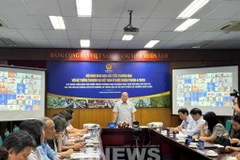
Vietnam’s trade counsellors believe in opportunities amid tariff challenges
The business community should strengthen resilience and diversify supply chains to reduce dependence on a single market for raw materials and intermediate goods, heard a hybrid conference held on April 28.
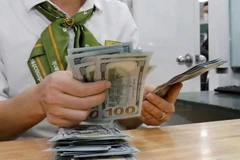
Reference exchange rate down April 29
The State Bank of Vietnam set the daily reference exchange rate for the US dollar at 24,960 VND/USD on April 29, down 4 VND from April 28.

Vietnam stimulates domestic consumption, diversifies export markets
Gaining a firm foothold in the domestic market of more than 100 million people is critically important to businesses as the domestic market, which, if properly leveraged, could help offset the decline in export orders.

Businesses urged to promote innovation in brand building
Amid global competition, branding is not just a marketing tool but also becomes a strategic factor that determines the position of enterprises and the national competitiveness.
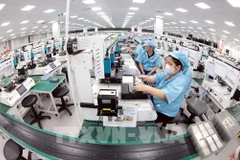
Investment in AI in Vietnam increases eightfold
Vietnam is entering a new phase of growth, where innovation, science, and technology are at the forefront of shaping its future. From being an emerging market, Vietnam has now risen to become a strategic destination for technology investment in Southeast Asia, driven by the aspirations of the entrepreneurial community and strategic guidance from the government

Vietnam, Cambodia seek ways to bolster economic, trade ties
Vietnam and Cambodia inked an agreement on promoting bilateral trade for the 2025–2026 period, which provides preferential tariffs for many competitive goods from each side – much more favourable than those under the ASEAN Trade in Goods Agreement (ATIGA).

New wharf at Lao - Viet Int’l Port inaugurated
The launch of Wharf No. 3 of Lao - Viet International Port expected to help ensure infrastructure for socio-economic development in both Vietnam and Laos, meeting the increasing demand for goods transportation.
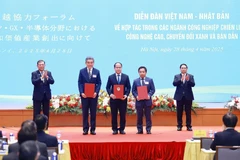
Vietnamese, Japanese PMs attend forum on strategic industries cooperation
Prime Minister Pham Minh Chinh and his Japanese counterpart Ishiba Shigeru attended the Vietnam-Japan Forum on cooperation in strategic industries, high technology, green transition, and semiconductors in Hanoi on April 28.
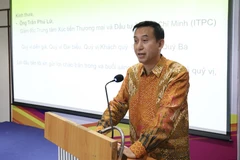
Seminar discusses scope for expanding Vietnam’s Halal exports to Indonesia
ITPC Director Tran Phu Lu noted that Vietnamese enterprises see opportunities to boost exports of Halal-certified products to Indonesia.
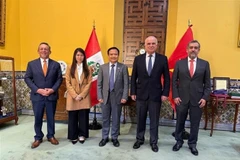
Vietnam, Peru step up economic and trade cooperation
Peru is currently Vietnam’s sixth-largest trading partner in Latin America. However, the trade value, standing at 518 million USD, remains modest compared to the potential and real demand between the two complementary economies.
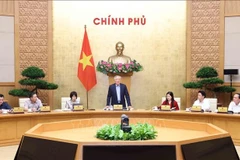
Deputy PM vows optimal conditions for firms to expand investment in int’l financial centres
Speaking at a meeting with representatives from ministries, agencies, international institutions, banks, investment funds and investors in Hanoi, Binh said that the Government of Vietnam is committed to always accompanying businesses, creating the most favourable conditions for enterprises to expand their investment in international financial centres in Vietnam as well as invest in other ecosystems that they are interested in.
Vietnam, Tunisia boost economic and trade cooperation
In 2024, trade between Vietnam and Tunisia reached 267 million USD, almost tripling the figure recorded in 2023. Vietnam’s main exports to Tunisia included footwear, raw coffee, pepper, cashew nuts, seafood, and machinery, while Vietnam imported seafood, dates, chemicals, and animal feed materials from Tunisia.
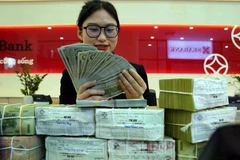
Reference exchange rate up 12 VND on April 28
The State Bank of Vietnam set the daily reference exchange rate for the US dollar at 24,960 VND/USD on April 28, up 12 VND from April 25.
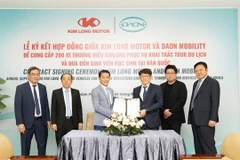
Local carmaker to export buses to RoK
It’s expected that the first batch of 50 electric EV Buses will be delivered to the Republic of Korea (RoK) for operation in the second quarter this year.

Da Nang launches direct air route to Uzbekistan
Nguyen Thi Phuong, President of Prestige DMC Vietnam, noted that the charter service from Tashkent to Da Nang is being operated through a partnership between Prestige DMC Vietnam, Red Island Company, Centrium-Air Airways, and Prestige Travel Uzbekistan.

